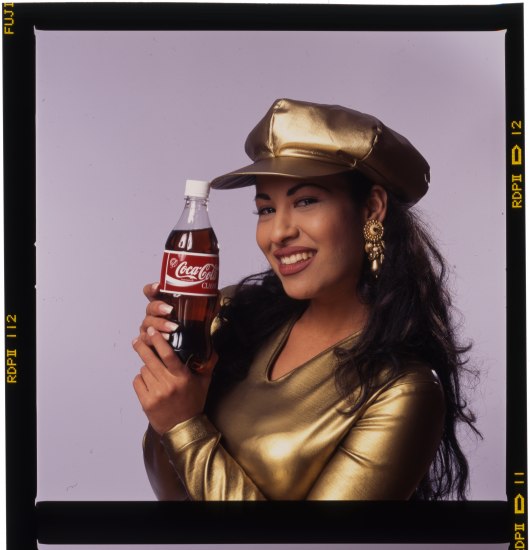
By Melinda Machado, Amelia Thompson, intern Chloe Reynolds
This post originally appeared on the National Museum of American History blog, Oh Say Can You See?
From the 1950s to 1970s, U.S. advertising started to shift from mass marketing to recognizing and defining distinct target markets. A unique example of this includes the rise of Selena Quintanilla-Pérez (1971–1995), whose hard-won fame spoke to a large cross-section of fans in the United States, in Latin American markets, and across the world. A new display opening September 12, 2017, in our American Enterprise exhibition explores marketing history and this pop icon.
Three women on our staff share their personal connections with Selena and discuss why her legacy matters not just to them but to many Americans.
When Selena was…
By Melinda Machado
On the evening of March 31, 1995, we returned home to the blinking light of the answering machine. Each message from Cousin Victor in San Antonio, Texas, was more frantic than the last. "Berin and Melinda, call home immediately." All we understood was that someone had been shot.
That someone turned out to be Selena Quintanilla-Perez—the 23-year-old Tejana singer who had just become the first Latina artist to top the U.S. Billboard 200 chart with her predominantly Spanish-language album. And somehow we had missed the news that Friday morning. The World Wide Web was relatively new. There were no smart phones. So it wasn't until that night that we learned she had been killed by the woman who was managing the Selena fan club and the artist's boutiques.
As I prepare to publicize the museum's Hispanic Advertising History initiative with the opening of a new display on that includes Selena artifacts, I can look back and see how my life intersected with hers and how I came to know and admire who she was. It's a good opportunity to reflect on the impact she made on American culture and to mourn what could have been.
Continue reading on the American History Museum blog...
Who Selena was…
By Amelia Thompson
If you were a teenage Latina in Texas in the mid-1990s, chances are you not only knew who Selena was, you were also a fan. Despite the fact that both my parents listened to her music and both attended what became her final concert at the Houston Rodeo, I was an exception. As a kid, my dad introduced me to his Beatles albums and big band music. At 16, I was more interested in the Fab Four and Frank Sinatra than I was the young woman whose looks were more reminiscent of my own.
Still, I have vivid memories of March 31, 1995, and seeing the tears in the eyes of family friends when news broke that Selena had been shot. I remember spending the afternoon on that last day of my spring break watching the story unfold. I also remember trying to understand what was so special about this person I knew so little about.
Two years later when a movie about her life was released I went with some friends to see what I could learn about the Tejano music superstar whose death had catapulted her to legendary status. This is what I found out: Selena Quintanilla grew up in southeast Texas, as did I. She was Mexican American, as was I. She loved disco and rock music, so did I.
Continue reading on the American History Museum blog...
What Selena means…
By Chloe Reynolds
Selena means car rides with my mother and singing as loud as I could in our little green minivan. To me, Selena represents all the rough days that could be solved by popping in a wonderful mix of songs and spending time with my family. The CD of my mother's own creation was always in the car. It featured Latina artists from Celia Cruz to Selena. Though Selena was murdered in 1995, a year before I was born, she was and still is very relevant to young Latinos everywhere. To me, her legacy lives on.
Selena succeeded in popularizing a genre of music that wasn't often in the limelight and got her album Dreaming of You, which was predominantly in Spanish, to the number-one slot on the Billboard 200 charts when it was released after her death. Her vivacity was infectious and she was a beacon of creativity and happiness. Her example is one of hope and determination to be the very best you can be and all it takes is passion, hard work, and surrounding yourself with people who love and care about you.
Listening to this music with my mom not only gave me an appreciation for the humility, talent, and passion of Selena. It also helped me to learn the language at a young age and made me curious about Spanish-language music as a whole. Artists like Selena popularized a different type of genre that the American public in many places wasn't always accustomed to. Released after her death, the movie Selena introduced more people to the young singer from Corpus Christi. Incidentally, it also served as a breakout for Jennifer Lopez, now an international music, movie, and television star.
Continue reading on the American History Museum blog...


